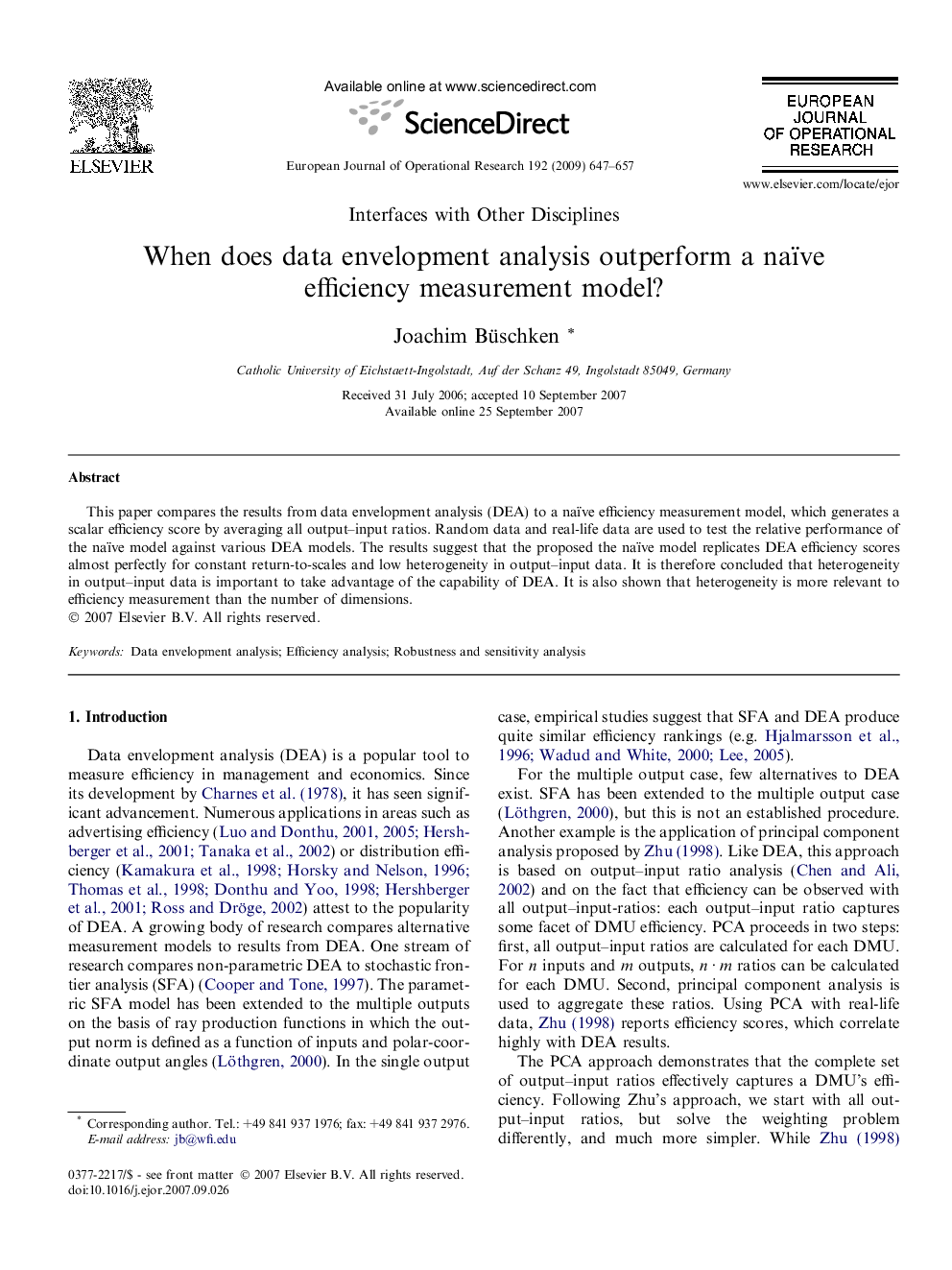| Article ID | Journal | Published Year | Pages | File Type |
|---|---|---|---|---|
| 481198 | European Journal of Operational Research | 2009 | 11 Pages |
Abstract
This paper compares the results from data envelopment analysis (DEA) to a naïve efficiency measurement model, which generates a scalar efficiency score by averaging all output–input ratios. Random data and real-life data are used to test the relative performance of the naïve model against various DEA models. The results suggest that the proposed the naïve model replicates DEA efficiency scores almost perfectly for constant return-to-scales and low heterogeneity in output–input data. It is therefore concluded that heterogeneity in output–input data is important to take advantage of the capability of DEA. It is also shown that heterogeneity is more relevant to efficiency measurement than the number of dimensions.
Related Topics
Physical Sciences and Engineering
Computer Science
Computer Science (General)
Authors
Joachim Büschken,
